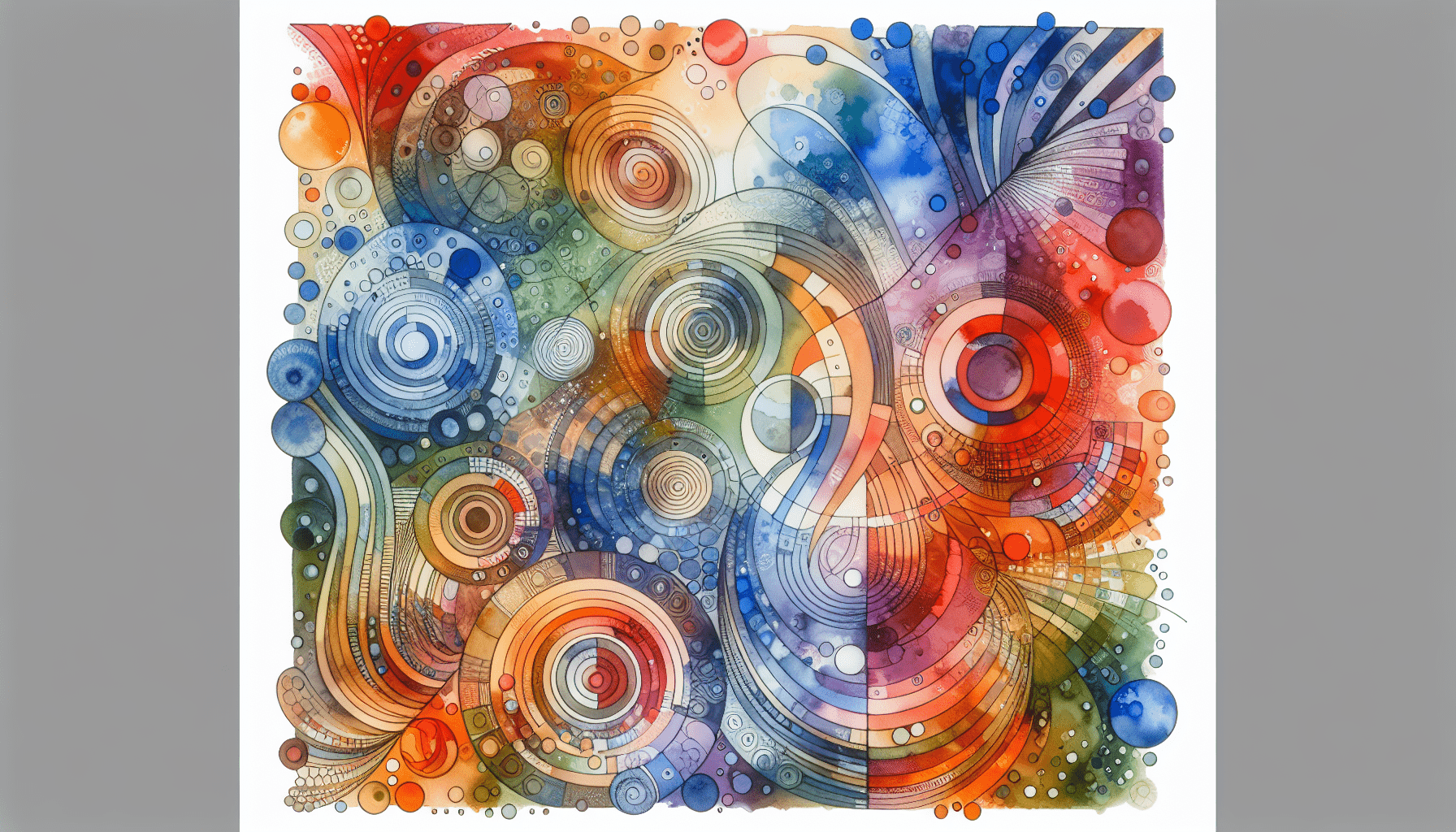Have you ever gazed at the intricate patterns of marble and wondered how you could replicate that mesmerizing effect? Marbling is an art form that creates just such patterns, using paints floating on a liquid surface that are then transferred onto paper or fabric. As a beginner, diving into the world of marbling may seem intimidating, but with the right techniques and materials, anyone can start creating unique art pieces. This guide aims to equip you with the essential knowledge to venture into marbling. With a professional approach, you will find that marbling can be both a rewarding and satisfying creative endeavor.
Understanding the Art of Marbling
Marbling is an ancient art form with roots tracing back to East Asia and the Middle East. It involves the suspension of paint or ink on a water or oil surface to create intricate, swirling patterns. The term “marbling” originates from its ability to mimic the appearance of marble stone.
The History and Origins of Marbling
The art of marbling dates back thousands of years with notable origins in Japan and Turkey. Suminagashi, or “floating ink,” was practiced in Japan as early as the 12th century. In Turkey, the art evolved, and what became known as “Ebru” flourished in the Ottoman Empire. Understanding this rich history adds depth to your practice.
Types of Marbling
There are different types of marbling, depending on the medium used to float the paint:
- Suminagashi: Originating in Japan and involving ink floated on water.
- Ebru: A Turkish method where colors are floated on a viscous, often oily, surface.
- Western Marbling: Typically involves patterns created on water thickened with a carrageenan extract.
Each style offers unique characteristics and challenges. For beginners, starting with basic water marbling techniques can be more manageable.
Essential Supplies for Marbling
Before you begin your marbling adventure, you’ll need to gather a few materials. While the specific supplies can vary depending on the type of marbling you choose to practice, some items are universally necessary.
Basic Marbling Supplies
Here’s a table summarizing the basic supplies you’ll need:
| Item | Description |
|---|---|
| Trays | A flat, shallow tray or basin to hold the marbling medium. Ideally, it should be large enough to accommodate your paper or fabric. |
| Paints | Special marbling paints are recommended for best results. These paints are designed to float on the surface of your marbling medium. |
| Water | Used to create a base layer for floating the paint. |
| Size | A viscous liquid, often derived from carrageenan or methylcellulose, used in some styles of marbling, like Ebru. |
| Paper/Fabric | Material on which you’ll transfer your designs. For paper, use absorbent and non-glossy types, while pre-treated or natural fiber fabrics work best. |
| Instruments | Tools like styluses, combs, and brushes to manipulate the paint into patterns. |
| Dropper/Bottle | For applying paint onto the water surface accurately. |
Choosing the Right Materials
Selecting quality materials can significantly influence your marbling experience and results. For paint, opt for those specifically labeled for marbling, as they have the correct consistency to float and spread on the surface. Similarly, using the appropriate size (thickening agent) ensures your patterns remain distinct and don’t blur together.

Preparing Your Workspace
Setting up your workspace correctly will facilitate a smoother marbling process. The goal is to create a controlled, clean environment where you can freely experiment with patterns.
Setting Up Your Marbling Station
Choose a flat, stable surface such as a table that can support your materials and will not easily tip over. Lay out a plastic or waterproof sheet to catch any spills or drips, maintaining the area clean.
Organizing Your Tools
Organize your tools, so they are easily accessible during the marbling process. Arrange paints, applicators, and paper or fabric in an order that allows for a logical flow of work. Keeping everything within arm’s reach will help maintain concentration and creativity.
Step-by-Step Guide to Marbling
Once your workspace is ready, it’s time to begin the marbling process. Each step plays a crucial role in ensuring the success of your marbling project.
Step 1: Preparing the Marbling Medium
For water marbling, fill your tray with water. If you’re using a size as your base, prepare it according to the product instructions, ensuring a thickened, gel-like surface to float the paints upon.
Step 2: Preparing Your Materials
Before you start applying paint, pre-treat your paper or fabric. Placing mordant, a chemical solution, onto the absorbent material can help fix the colors more effectively. Allow it to dry before proceeding.
Step 3: Applying Paint to the Surface
Using a dropper or small brush, gently apply droplets of paint onto the surface of the water or size. Begin with a few drops and gradually add more, observing how they spread and interact.
Step 4: Creating Patterns
Use your chosen tools to manipulate the paint. Simple patterns can be created by gently swirling with a stick, while combs can craft more intricate designs. Experiment and improvise to discover what works best for you.
Step 5: Transferring the Pattern
Carefully lay your paper or fabric onto the paint surface. Avoid trapping air bubbles by lowering one edge first, then smoothing it out. Once the pattern is transferred, lift the paper slowly to reveal your marbled design.
Step 6: Rinsing and Drying
Rinse the finished artwork under flowing water to remove any residual medium, revealing the vibrant colors. Let it dry flat, away from direct sunlight, to preserve color integrity.

Common Challenges and Solutions in Marbling
Every beginner is bound to face some hurdles. Here are some common issues and their solutions:
Paints Not Spreading
If your paints aren’t spreading, they may be too thick. Dilute them slightly with water, testing their spreadability before using them again.
Colors Blurring
This is often caused by excessive manipulation. Use light, delicate motions and adjust the viscosity of your medium if necessary.
Patterns Not Transferring
Ensure your paper or fabric is adequately pre-treated and pressed smoothly onto the surface. Any gaps or air bubbles can disrupt the transfer.
Tips for Successful Marbling
Marbling is as much an art form as it is a skill. Here are a few tips to help hone your craft:
Consistency is Key
Maintain consistency in the thickness of your paints and marbling medium. This ensures your designs retain clarity.
Experiment With Colors
Contrasting colors often yield the most striking results. Don’t be afraid to mix unconventional shades and explore new color palettes.
Practice Patience
Marbling requires a slow and steady hand. Rushing through the process can lead to muddled patterns or an unintended mess.
Continuing Your Marbling Journey
As you grow more comfortable with the basics, you may wish to explore more advanced forms of marbling or incorporate diverse materials into your projects. Consider joining a marbling community or taking a workshop to refine your skills further.
Diversifying Techniques
Once you’ve mastered basic patterns, explore techniques like comb marbling, French marbling, or marbling on different surfaces such as silk or wood.
Engaging With the Art Community
Connecting with others who share your passion can be very beneficial. Online forums, social media groups, and local craft clubs can offer support and inspiration.
Conclusion
By mastering the foundational techniques in marbling, you open up a world of artistic possibilities. Remember that marbling is as much about creating as it is about exploring and discovering. Embrace accidents as part of the creative process, and let your personal style develop organically. The beauty of marbling lies not only in its aesthetic appeal but in the mindset it encourages—one of patience, experimentation, and appreciation for the unexpected. With time and practice, beginner marblers can transform into skilled artists capable of producing stunning marbled artworks.



